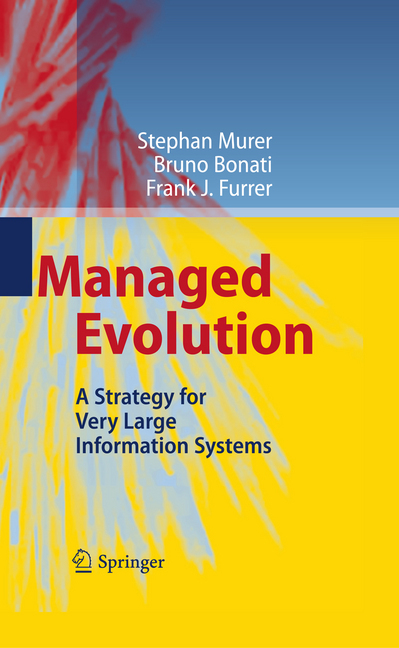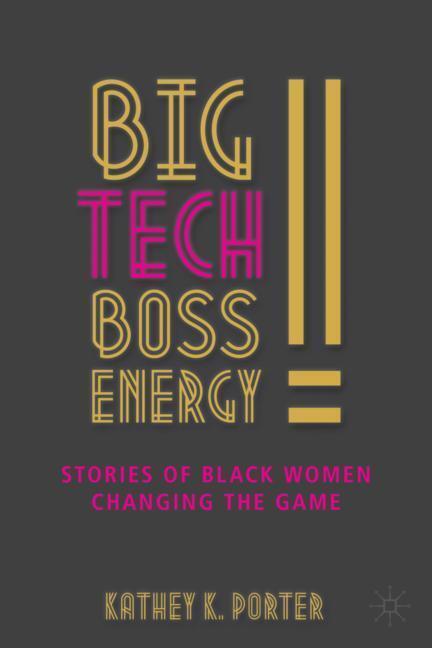Managed Evolution
A Strategy for Very Large Information Systems
Many organizations critically depend on very large information systems. In the authors' experience these organizations often struggle to find the right strategy to sustainably develop their systems. Based on their own experience at a major bank, over more than a decade, the authors have developed a successful strategy to deal with these challenges, including: - A thorough analysis of the challenges associated with very large information systems - An assessment of possible strategies for the development of these systems, resulting in managed evolution as the preferred strategy - Describing key system aspects for the success of managed evolution, such as architecture management, integration architecture and infrastructure - Developing the necessary organizational, cultural, governance and controlling mechanisms for successful execution
Stephan Murer was born 1963 in Switzerland. He graduated with an information technology engineering diploma and a Ph.D. in computer science from the ETH in Zürich in 1992. After that he continued his academic career at the International Computer Science Institute of the University of California, Berkeley. 1994 Stephan joined Credit Suisse, where he held a number of different positions. In 2000 he completed his MBA from the University of St. Gallen. Since 2000 he has been managing director and chief architect, responsible for the overall design of Credit Suisse's Information systems. Stephan Murer can be reached at stephan.murer@credit-suisse.com. Bruno Bonati was born 1949 in Switzerland and studied Economics at the University of St.Gallen. He graduated as lic.oec.HSG in 1973. After graduation he worked in several companies and in 1996 he became Member of the Executive Board and Head of IT and Operations in Credit Suisse. In 1997 Credit Suisse started the managed evolution strategy in IT and developed the Service Oriented Architecture for the Swiss IT Platform. In 2005 after retirement from Credit Suisse he worked as an independent consultant for IT and Banking. He has been the senior consultant for the Industry Value Network, an initiative led by SAP with 40 member companies (20 large banks and 20 vendors) with the goal to develop SOA in banking, which shifted, in 2008, into an independent organization in order to enable the standardization of services in banking. He is a member of several non executive boards of directors, among them Tieto Helsinki/Stockholm and Swisscom IT Services. Bruno Bonati can be reached at bruno@bonati-consulting.com. Frank J. Furrer was born 1945 in Switzerland and studied electrical engineering at the Swiss Federal Institute of Technology in Zurich (ETH Zurich). He graduated as Master of Science in 1969. After graduation he worked as a research assistant at the Institute of Technical Physics at the Swiss Federal Institute of Technology in Zurich (Prof. Dr. E. Baumann) and earned his Ph.D. in advanced communications engineering in the year 1975. In the following years he worked in several consulting firms. 1997 he started his own consulting practice, focussed on applications architecture and security for very large information systems. Frank J. Furrer is the author of several books on industrial communications and information system security and works as an independent consultant. Frank J. Furrer can be reached at frank.j.furrer@villa-aurora.ch.
Stephan Murer was born 1963 in Switzerland. He graduated with an information technology engineering diploma and a Ph.D. in computer science from the ETH in Zürich in 1992. After that he continued his academic career at the International Computer Science Institute of the University of California, Berkeley. 1994 Stephan joined Credit Suisse, where he held a number of different positions. In 2000 he completed his MBA from the University of St. Gallen. Since 2000 he has been managing director and chief architect, responsible for the overall design of Credit Suisse's Information systems. Stephan Murer can be reached at stephan.murer@credit-suisse.com. Bruno Bonati was born 1949 in Switzerland and studied Economics at the University of St.Gallen. He graduated as lic.oec.HSG in 1973. After graduation he worked in several companies and in 1996 he became Member of the Executive Board and Head of IT and Operations in Credit Suisse. In 1997 Credit Suisse started the managed evolution strategy in IT and developed the Service Oriented Architecture for the Swiss IT Platform. In 2005 after retirement from Credit Suisse he worked as an independent consultant for IT and Banking. He has been the senior consultant for the Industry Value Network, an initiative led by SAP with 40 member companies (20 large banks and 20 vendors) with the goal to develop SOA in banking, which shifted, in 2008, into an independent organization in order to enable the standardization of services in banking. He is a member of several non executive boards of directors, among them Tieto Helsinki/Stockholm and Swisscom IT Services. Bruno Bonati can be reached at bruno@bonati-consulting.com. Frank J. Furrer was born 1945 in Switzerland and studied electrical engineering at the Swiss Federal Institute of Technology in Zurich (ETH Zurich). He graduated as Master of Science in 1969. After graduation he worked as a research assistant at the Institute of Technical Physics at the Swiss Federal Institute of Technology in Zurich (Prof. Dr. E. Baumann) and earned his Ph.D. in advanced communications engineering in the year 1975. In the following years he worked in several consulting firms. 1997 he started his own consulting practice, focussed on applications architecture and security for very large information systems. Frank J. Furrer is the author of several books on industrial communications and information system security and works as an independent consultant. Frank J. Furrer can be reached at frank.j.furrer@villa-aurora.ch.
1;Foreword;6 2;Preface;8 2.1;Context;8 2.2;Challenge;9 2.3;The Message in This Book;9 2.4;Side-Stories;10 2.5;Intended Audience;10 2.6;Structure of the Book;11 3;Acknowledgments;12 4;About the Authors;14 5;Contents;16 6;List of Figures;20 7;List of Tables;22 8;List of Side Stories;24 9;Part I: Structure, Properties, Challenges and Architecture of Very Large Information Systems;26 9.1;Chapter 1: Very Large Information System Challenge;27 9.1.1;1.1 Background;27 9.1.2;1.2 Complexity of Very Large Information Systems;29 9.1.3;1.3 Properties of Very Large Information Systems;33 9.1.4;1.4 Strategic Approaches for Very Large Information Systems;38 9.1.4.1;1.4.1 Opportunistic Approach;41 9.1.4.2;1.4.2 Replacement Approach;43 9.1.4.3;1.4.3 Greenfield Approach;46 9.1.5;1.5 The Core Idea of Managed Evolution;47 9.1.6;1.6 Elements of Managed Evolution;54 9.1.7;1.7 Where to Start with Managed Evolution;56 9.2;Chapter 2: Architecture Management;59 9.2.1;2.1 What is IT Architecture and Why Is It Important to Managed Evolution;59 9.2.2;2.2 Architecture Principles;61 9.2.3;2.3 Architecture Layers and Models;63 9.2.4;2.4 Business Architecture;66 9.2.5;2.5 Application Architecture;69 9.2.6;2.6 Technical Architecture;81 9.2.7;2.7 Vertical Architectures;84 9.2.8;2.8 Architecture as an Activity: The Architecture Process;89 9.2.9;2.9 Architecture Organization: Federated Architecture Process;95 9.3;Chapter 3: Integration Architecture;102 9.3.1;3.1 Enabling Managed Evolution;102 9.3.2;3.2 Challenges for Integration Architecture;104 9.3.3;3.3 Composing Systems from Components;106 9.3.3.1;3.3.1 Functional Composition;107 9.3.3.2;3.3.2 Desktop Integration;108 9.3.3.3;3.3.3 Process Orchestration;109 9.3.3.4;3.3.4 Layering Components;109 9.3.4;3.4 Choosing the Right Interfaces;114 9.3.4.1;3.4.1 Adequate Degree of Coupling;115 9.3.4.2;3.4.2 Adequate Integration Scope;117 9.3.4.3;3.4.3 Avoid Redundancy;118 9.3.4.4;3.4.4 Formal Syntax and Rich Semantics;119 9.3.4.5;3.4.5 Adequate Granularity and Reuse;122 9.3.4.6;3.4.6 Bridging Technical Heterogeneity and Network Distance;123 9.3.4.7;3.4.7 Use Industry Standards Where Applicable;124 9.3.5;3.5 Interfaces and Service Contracts;125 9.3.5.1;3.5.1 Interfaces and Services;126 9.3.5.2;3.5.2 Non-Functional Properties of Services;129 9.3.5.3;3.5.3 Contracts as Active Relationships;130 9.3.5.4;3.5.4 Service Versioning;132 9.3.6;3.6 Service Management Process;134 9.3.7;3.7 Service Delivery Infrastructure;139 9.3.8;3.8 Consuming Foreign Services;142 9.3.9;3.9 Evolutionary Decomposition of Monolithic Systems;147 9.4;Chapter 4: Infrastructure;152 9.4.1;4.1 Managed Evolution of Infrastructure;152 9.4.2;4.2 Technology Portfolio;154 9.4.3;4.3 Platforms;161 9.4.3.1;4.3.1 Platform Concept;161 9.4.3.2;4.3.2 Platforms as Infrastructure Service Providers;162 9.4.3.3;4.3.3 Application Development Support Processes;164 9.4.3.4;4.3.4 Platforms Operation Processes;165 9.4.3.5;4.3.5 Platform Management Processes;169 9.4.3.6;4.3.6 Application Platforms and Runtime Platforms;171 9.4.4;4.4 Operations;175 9.4.4.1;4.4.1 Operational Challenge of Managed Evolution;176 9.4.4.2;4.4.2 Componentization for Operations;176 9.4.4.3;4.4.3 Autonomic Computing;178 9.4.4.4;4.4.4 Configuration Management Database;181 10;Part II: Organization and Management Processes for the Execution of Managed Evolution;183 10.1;Chapter 5: Business-IT Alignment;184 10.1.1;5.1 Managed Evolution and Business-IT Alignment;184 10.1.2;5.2 Limitations of Hierarchical IT Governance;188 10.1.3;5.3 Matching Roles: Balance of Power;189 10.1.4;5.4 Governance Models for Project Portfolio Management;194 10.1.5;5.5 Business-IT Alignment Processes;199 10.1.5.1;5.5.1 Strategic Business-IT Alignment Process;199 10.1.5.2;5.5.2 Project Portfolio Management Process;204 10.1.5.3;5.5.3 Project Management Process;206 10.2;Chapter 6: People, Culture and Organization;208 10.2.1;6.1 People and Skills;208 10.2.2;6.2 Culture and Values;213 10.2.3;6.3 IT Organization;217 10.2.3.1;6.3.1 IT Organiz
Murer, Stephan
Bonati, Bruno
Furrer, Frank J.
| ISBN | 9783642016332 |
|---|---|
| Artikelnummer | 9783642016332 |
| Medientyp | E-Book - PDF |
| Auflage | 2. Aufl. |
| Copyrightjahr | 2010 |
| Verlag | Springer-Verlag |
| Umfang | 264 Seiten |
| Sprache | Englisch |
| Kopierschutz | Digitales Wasserzeichen |






